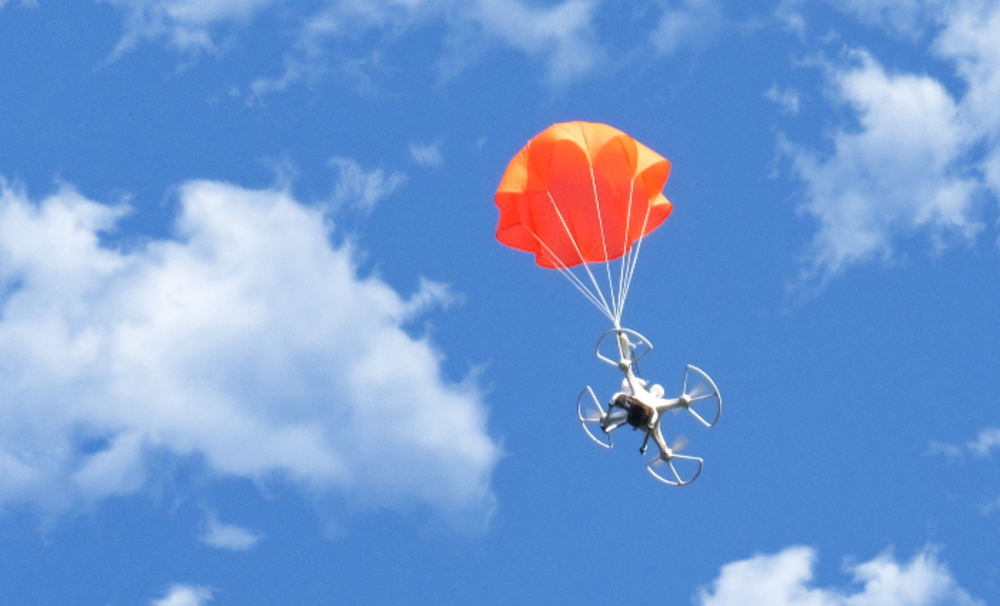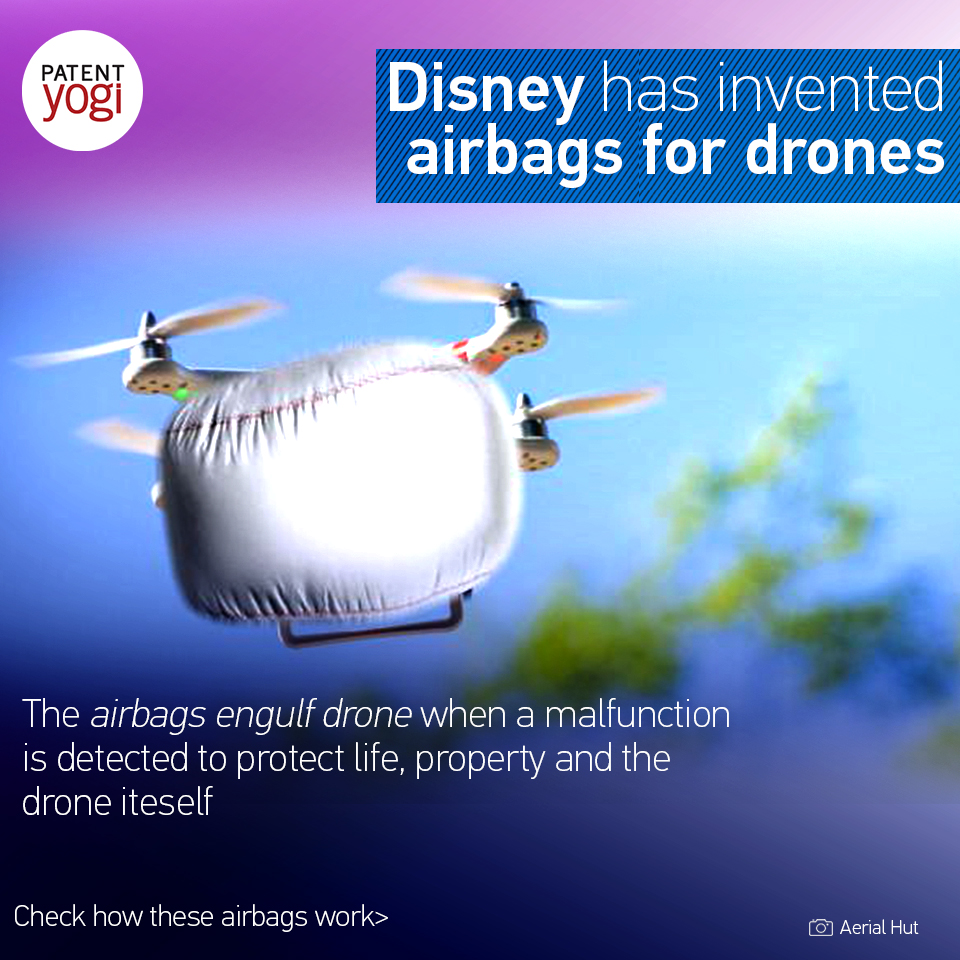As drones or unmanned aerial vehicles (“UAVs”) take over the world, they pose a significant security threat to life, property and even to themselves.
Drones have become more commonplace in entertainment environments such as theme parks, film sets, sports environments, and news environments. Drones are mostly used for providing entertainment, aerial cinematography, delivering packages, gathering video, images, and audio. A pilot can wirelessly navigate the drone from a remote location. Alternatively, the DRONE may have an autopilot feature so that it is operated and navigated by a computing device.
As drones increasingly fly over locations where people are present, safety for those people is an important goal. Equipment malfunction, aerial hazards, and aerial maneuvers are examples of events which may result in a loss of propulsion.

Several systems have been developed to deal with the security threat posed by drones. This includes using parachutes which deploy when the drones malfunction. However, parachutes often entangled with the drones. Moreover, a parachute requires a fall distance to deploy and properly decelerate a vehicle. Therefore, a parachute is less effective at low altitude. Another solution is to use geofencing. The geofence allows the drone to fly within a perimeter, e.g., a safe distance away from people or objects. Geofencing restricts the use and benefits of a DRONE. Since a geofence is a control system rather than a physical barrier, the DRONE can still fly through the geofence as a result of hardware or logic failure.
Disney has developed a solution that will work in all scenarios. Basically, Disney has developed an airbag for drones. The airbag may be deployed by a pilot by sending an activation signals. Also, the drone may automatically deploy the airbag on detecting a condition warranting activation. Such conditions include power failure, motor failure, guidance system failure, unexpected change in control source, navigation failure, air pressure change, change in acceleration or speed, mid-air collision with an obstacle and the like.
The airbag is inflated to cover the hard, sharp, and spinning parts of the drone, e.g., the propellers, and the frame. As a result, any impact of the drone is with the airbag rather than a hard or spinning drone component.
Further, there may be two airbags. For instance, a first airbag is positioned above the center of gravity of the drone whereas a second airbag is positioned below the center of gravity of the drone. Each airbag has dimensions such that both in total engulf the entire frame structure and propulsion mechanism, e.g., propellers, of the drone. In contrast with previous approaches, e.g., the parachute configuration, that allowed different components of the drone to be exposed after the safety mechanism was activated, the drone uses the airbag to engulf the hard, sharp and spinning components of the drone to reduce the effect of impact.
Publication number: US 20160332739
Patent Title: Impact absorption apparatus for unmanned aerial vehicle
Publication date: 17 Nov 2016
Filing date: 15 May 2015
Inventors: Clifford Wong;
Original Assignee: Disney Enterprises, Inc.


